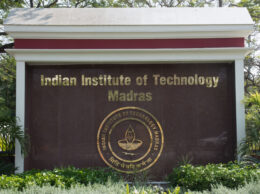BHOPAL : Indian Institute of Science Education and Research Bhopal (IISER) collaborated with CIMMYT and University of Michigan researchers to develop a ground-breaking satellite-based technology that provides insights into greenhouse gas emissions from the burning of stems, leaves, and other residues from harvested crops in India.
The study demonstrates how spectral data — light and other electromagnetic radiation — collected by space-based instruments can accurately estimate greenhouse gas emissions on a massive scale.
In the wake of the Green Revolution’s success, India witnessed a remarkable surge in food grain production particularly for rice and wheat. However, the management of crop residues, a byproduct of this intensive agriculture, has emerged as a major sustainability challenge.
Crop residue burning (CRB), the prevalent method for handling these residues, has raised serious environmental concerns. To clear their fields to sow subsequent crops, Indian farmers burn some 87 million tonnes of crop residues annually, surpassing the entire agricultural waste production of peers in neighbouring countries.
Explaining the seriousness of the issue, Dr. Dhanyalekshmi K. Pillai, Assistant Professor and Head of the Max Planck Partner Group, IISER Bhopal, said, “Crop residue burning has significant repercussions, as it releases pollutants and greenhouse gases to the atmosphere, leading to severe and adverse impacts on climate, public health, and food security. Current agricultural practices are unsustainable and adequate technology interventions are crucial.”
The findings of this research reveal a staggering 75% surge in greenhouse gas emissions over the past decade, with Punjab and Madhya Pradesh emerging as the top emitters. The burning of rice, wheat, and maize crops accounted for 97% of India’s agricultural burning emissions, with rice being the largest contributor at 55%.
Highlighting the policy initiatives required in this sector, Mr. Monish Deshpande, Research Scholar, Greenhouse Gas Modelling and Applications Group, IISER Bhopal, said, “The Indian government implemented measures to reduce crop residue burning, such as incentives for farmers for not burning and promoting biofuel production from residues. While there was an initial decrease in burning in 2014-2015 due to policy implementation, a surge occurred in 2016, highlighting the need for more effective and sustainable policies.”
Tackling the challenges of CRB requires knowing the spatial and time-dependent emissions across the country. The collaborative study presented here leverages remote sensing technology to offer precise insights into the scale of CRB emissions across the country.
“The detailed mapping of these emissions can underpin successful policy interventions to control residue burning. Conservation agriculture, which involves reduced tillage and retaining residues as surface mulches, has long been studied and promoted by CIMMYT and partners. It offers an effective way to reduce crop residue burning, cost of production, and time required for crop establishment, without sacrificing yields”, said Dr. Vijesh V. Krishna, a senior economist at CIMMYT.
Whereas previous assessments of residue burning have relied on agreed estimates of the portion of crop residues that farmers burn, this study used satellite and other forms of data to reveal which crops are grown, when they are grown, and how technology is used in different districts, focusing on actual district-level agricultural burned area and associated emissions, from 2011 to 2020.
The research was conducted by Mr. Monish Deshpande, Research Scholar, Greenhouse Gas Modelling and Applications Group, IISER Bhopal, within the framework of IISERB-CIMMYT collaborative project led by Dr. Dhanyalekshmi K. Pillai, Assistant Professor and Head of the Max Planck Partner Group, IISER Bhopal.
This study was published in the reputed peer-reviewed journal Science of the Total Environment. The journal paper was co-authored by Monish Vijay Deshpande, Nitish Kumar, Dhanyalekshmi K. Pillai, Vijesh V. Krishna, and Meha Jain. These researchers are affiliated with IISER-Bhopal, CIMMYT-Hyderabad, and the University of Michigan. The paper may be accessed here: https://doi.org/10.1016/j.scitotenv.2023.166944








